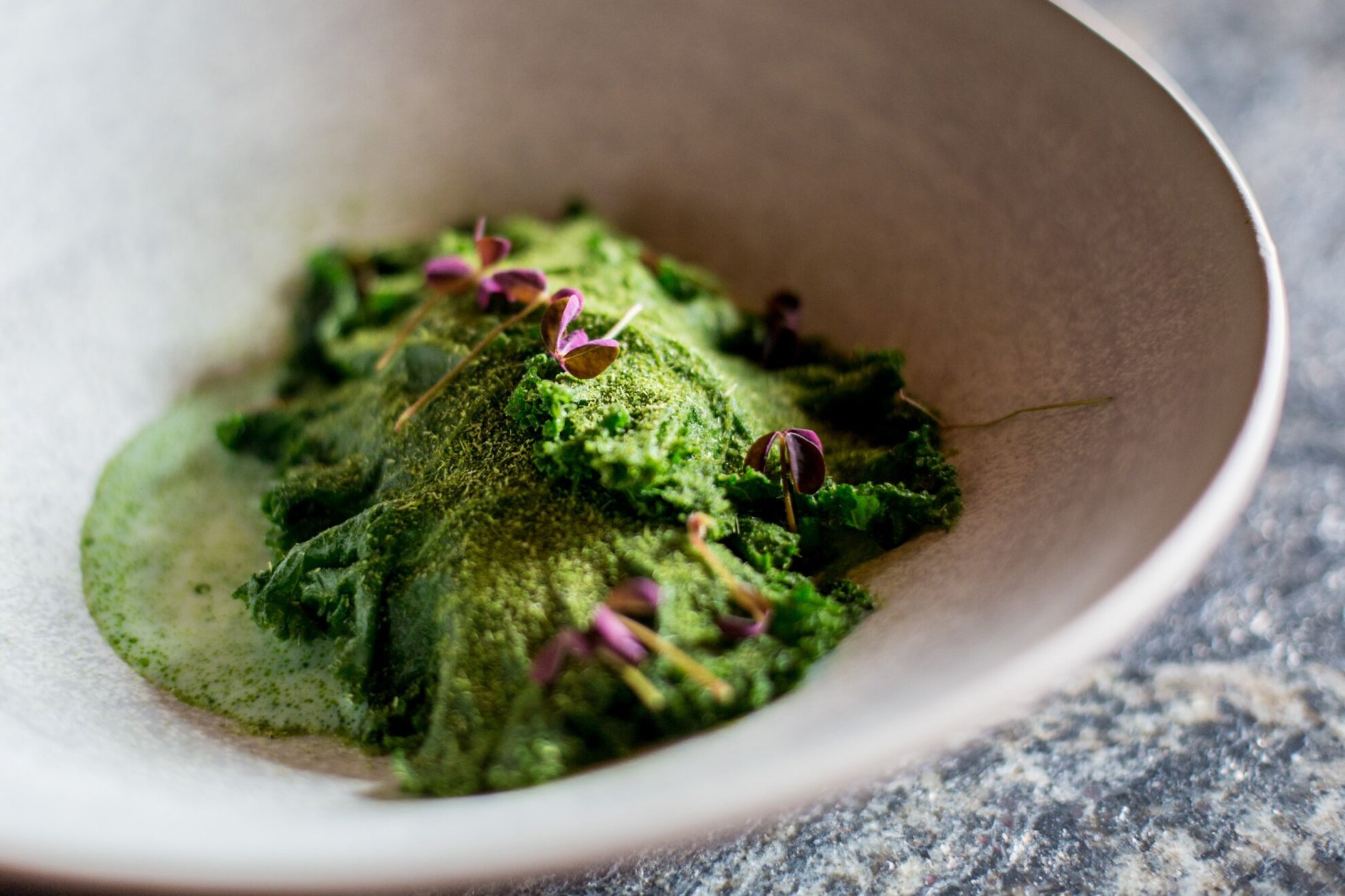Even though the restaurant is called Ramazuri, a Hungarian expression for mess and commotion, its atmosphere hardly stays true to the name: the moderately eclectic interior is decorated with oak wall panels, bare brick and leather seating. Diners can sit on the friendly, traditional terrace as well, where they can watch the hustle and bustle of Úri Street and Szentháromság Street.

Ramazuri has separate lunch and dinner menus. Being located in the tourist zone, just a few meters from Matthias Church and the Fishermen’s Bastion, it has a bistro-style lunch menu that features a fair number of Hungarian dishes, such as goulash soup (1900 HUF) and pork-cheek stew (3800 HUF). The degustation and dinner menus, available from 6pm, are fully devoted to providing an excellent dining experience – both will be changed on a monthly basis in accordance with seasonal ingredients and the chef’s creative ideas.
The selection of dishes available at the time of the restaurant’s soft opening is the work of chef Norbert Fekete; chef Dániel Eszenyi joined the staff sometime later. In the future, the two chefs will assemble the dishes and guide the restaurant’s international seasonal kitchen, significantly inspired by New Nordic Cuisine. As enthusiastic followers of food pairing, they have a workflow that usually begins with determining the flavors, then working out the textures, and finally putting the food into shape. To further improve the end result, the dish is then presented on the beautiful ceramic plates of Ádám Szabó.

At the time of this visit, chef Norbert helped provide greater insight beyond the sparing descriptions of the dishes on the menu – some offer more than meets the eye. Scallops served with quinoa and green peas (4200 HUF), for example, were complemented with Serrano ham in the form of a dressing, made much like bonito, a Japanese soup stock, by replacing the dried fish flakes with Jamón serrano. The classic flavors of the beef tartare (3900 HUF) are brought out by fried onion, pickled mustard seeds and dried egg yolk, and served with gluten-free crackers instead of bread; the decorative sorrel gives the dish mild acidity, while the monks cress provides a horseradish-like tang.


We sampled various meaty main dishes and one meatless one; vegetarians don’t have to miss out on further gorgeous offerings, either, and even vegans can request a complete menu of their own. The robuchon croquette, for example, caters to a herbivore audience, served with a characteristic gruyère-cheese sauce, mushrooms, zucchini and yellow pattypan squash (3900 HUF).

At the same time, the lamb rump served with celery cream, beetroot and chard (5300 HUF) and the duck breast served with cherry gel, chocolate garnish and various types of Jerusalem artichoke (5400 HUF) proved to be excellent, as well.


Still, our favorite was the cod fish served with chlorophyll and buttermilk (5800 HUF), which gave the impression of a sea monster. The kale covered a multi-layered creation in various shades of green, made of green asparagus, baby broccoli, green apple (also present in gel form), sea asparagus and green pea, seasoned with buttermilk-infused dashi and kaffir lime.

Ramazuri’s desserts are worth a taste, too. We liked both the somewhat surprising dill cottage-cheese pie (2000 HUF), made with soft goats’ cheese, siphon-aerated cottage-cheese mousse with egg yolk sabayon, Tahitian vanilla, pasta made with black molasses, and gratin made with sorrel and dill, and the less extreme combination of chocolate, apricot and raspberry (2100 HUF), topped with pop rocks.


To receive an overall impression of Ramazuri’s vision and style, we recommend trying a degustation menu (five dishes, 16,000 HUF; with wine pairing, 23,000 HUF). The term bistronomy is supposed to indicate that the restaurant doesn’t identify as a fine dining restaurant or bistro, but extends beyond the classic scope instead. We think that Ramazuri is more than capable of taking on Budapest’s best restaurants with its straightforward, innovative mentality.




